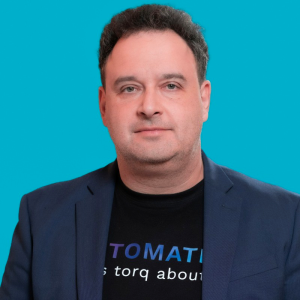In a tough funding climate, cybersecurity automation company Torq recently raised a $42 million Series B venture capital round. Luckily for MSPs, Torq plans to funnel much of that money into the channel.
Torq relies heavily on channel partners to help bring its automated threat detection and response platform to customers, according to Co-founder and Chief Technology Officer Leonid Belkind. Now in its fourth year of operations, Torq had 300% revenue growth and 500% customer growth in 2023. That wouldn’t have been possible without its channel program, Belkind said.
In fact, channel relationships will become even more central. “Building the business machine becomes a bigger part of what we as executives are focused on,” he added.
Building on the Channel
Torq launched its channel program in June 2023, headed by Sheldon Muir, who had joined the company earlier that year.
Part of the money from its latest funding round will go toward growing the headcount on channel management teams. These executives will work more closely with developers, among other priorities, Belkind said.
The program comprises three tiers:
- Reseller
- Post-sales and professional services support
- MSP/MSSP
MSP- and MSSP-level partners involved in full lifecycle management are guaranteed a 25% profit margin. These include MSSPs, managed detection and response firms, firewall, email security, data security, and similar providers. Belkind said the margin is offered through a flexible process that layers licensing on each partner’s existing pricing model, whether it is a flat rate, per seat, or some combination thereof.
“We partner with organizations so they can resell our products,” Belkind said. “We also train [and] work with them so they can provide additional service on which they’re making a way better margin using our infrastructure.”
The Automation Threshold
While AI is not central to Torq’s technology, is important. It helps Torq deliver on its promise to help partners support up to 10 times more customers or reduce up to 90% of triage with existing staff resources.

Leonid Belkind
The difference comes from faster response times, Belkind explained. “I would like to raise a bold claim that up until now, unfortunately, response on managed security services is something still very manual, very not scalable.”
In response, Torq partners with several leading MDR services. This allows providers to speed up and introduce typical containment more closely integrated with end-user infrastructures. Torq simultaneously markets automated quarantining capabilities directly to end users, promoting the ability to reduce the potential damage as they marshal their own response.
This tandem marketing is a slightly more complex model. But for the future of the managed security services industry, “It contains a tremendous promise,” Belkind noted.
At the same time, a pledge to exponentially increase threat detection begs the question of how MSPs would handle all the data and possible support tickets generated.
Automation would address more than detection and containment, in accordance with major cybersecurity frameworks, Belkind emphasized. “It can go ahead all the way to changing configuration, updating software, so on and so forth. It doesn’t have to stop.”
Still, automated response is not yet as widely adopted as automated detection. Belkind said services providers often fear possible disruptions automated response might cause, or simply resist the friction that comes with integrating new technologies into tech stacks that vary from customer to customer.
That quandary creates one of Torq’s biggest value propositions: MSPs can focus on their know-how of security operations and finding the pertinent signals in the noise, while Torq handles the technicalities of how to integrate with the customer’s infrastructure, ingest all kinds of data types, scale up and down, and provide reliability within the parameters required by the customer and the industry.
Image: DALL-E














